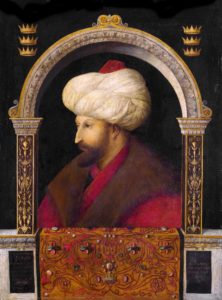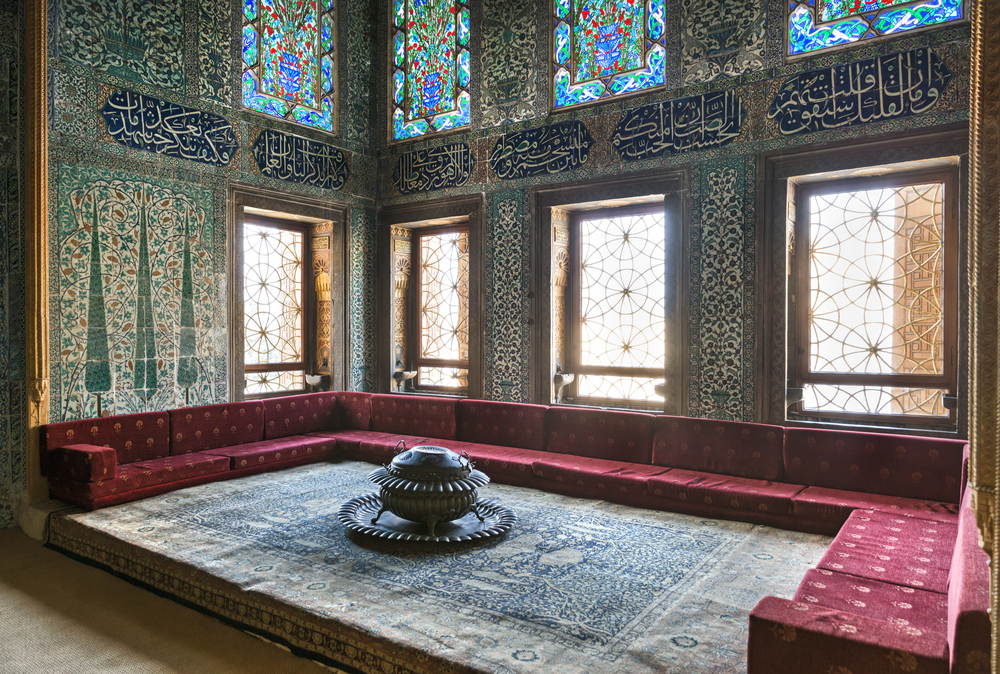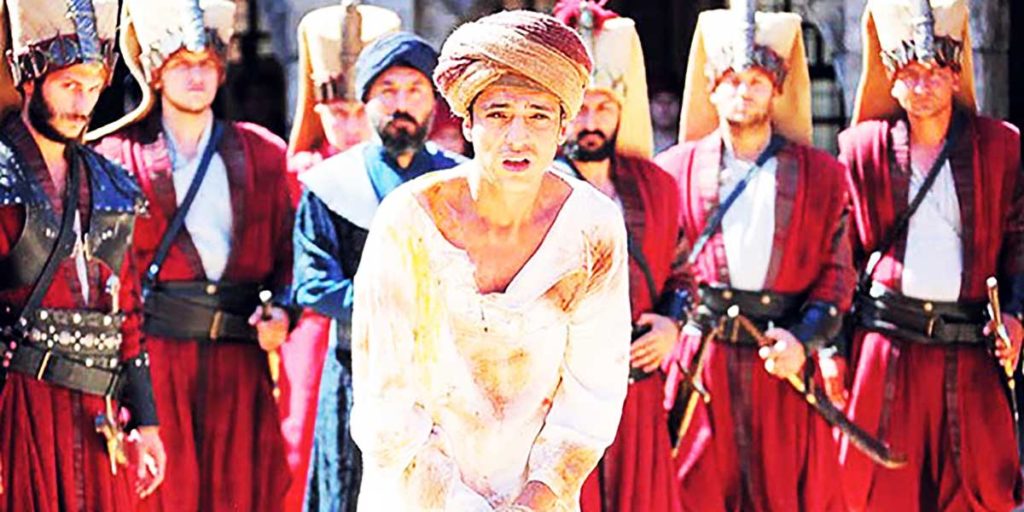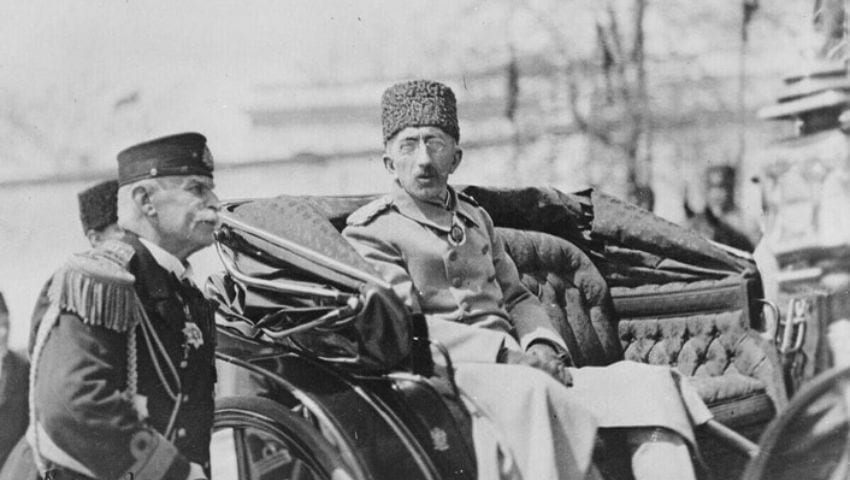Killing your own brother or brother(s), sounds terrible, right? Well, add into the mix several other male relatives as well because killing them was the norm too. Wait, what? Yep, hundreds of years ago in the Ottoman Empire, there existed a law of fratricide which allowed any Ottoman prince to kill all his brothers when he became the Sultan. And it was considered perfectly legal, with little regard for the murky legal foundations it entailed. But what prompted the existence of such a law in the first place? Was it Islamic? Was it justified in any way? We’re here to talk about just that.
But before we continue, this article will be primarily focused on pragmatic reasoning instead of seeing the law solely from a religious lens which shall be the subject matter for another post. So our basic reason for this article is in answering the question, “was it beneficial for the longevity of the state and the public to have such a law?” rather than “was it Islamic or not?”.
Reasons behind the Law
The Ottoman state came into formal existence in 1308 with Osman Gazi being the very first ruler. He is believed to have executed his uncle Dundar Bey due to conflicting reasons as recorded by history but the execution in itself was not because of any such fratricidal law. All of Osman’s brothers and male relatives lived by. The same was the case of rulers that came after him including Sultan Orhan I, Murad I, and Bayezid I leaving discretionary cases such as Sehzade Savci’s rebellion against his father Murad I and Sehzade Yakub’s killing by Sultan Bayezid I when the latter became the Sultan.
However, things got a bit murky with the lattermost Bayezid I. You see, Sultan Bayezid fought a war with Amir Timur, the founder of the Timurid Empire named the Battle of Ankara in 1402 and was captured. This resulted in the remainder of his 4 sons fighting battles of succession for a whopping 11 years from 1402-1413 until Sultan Mehmed I finally took the throne. The civil wars cost a lot in terms of Ottoman resources and human loss as well. While this wasn’t to start the fratricidal law itself, it is an important incident that was to become a major argument for the law’s existence later on.
That is when Sultan Mehmed II ascended the throne for the second time in 1451 at the age of 19. He put the law into force stating,
“Fratricide, for nizām-i ‘ālem (the common benefit of the people), is acceptable for any of my descendants who ascends the throne by God’s decree. The majority of the ‘ulemā (Muslim scholars) permits the fratricide”
and from there onwards, every male who was not a child of the ascending Sultan was to be strangled by a bowstring. This though did not include male children of the female relatives of the Sultan, for example, children of his sister, and was applicable to his brothers and their descendants.
 A portrait of Sultan Mehmed II
A portrait of Sultan Mehmed II
Mind you, before you make an abrupt judgment about Mehmed II, know that he was the one who conquered Constantinople just 2 years later at the age of 21 styling himself as Kaiser-e-Rum.
So how long did the law last?
After Mehmed II; Sultan Bayezid II, Selim I, Suleyman I, Selim II, Murad III and Mehmed III continued on with the tradition. Sometimes, they killed their brothers because of rebellion after the current Sultan died and all the siblings fought to take over the throne while sometimes they just did it regardless as the law allowed them to do so.
In fact, Sultan Mehmed III was recorded as having 19 of his brothers executed on the day he became Sultan. Amelia Soth from JSTOR narrates an anecdote illustrating the entire scene:
When Mehmed III was crowned, he called his nineteen brothers into the throne room. They had nothing to fear, he told them, for he had only brought them there to be circumcised. In the next room, the assassins were waiting. One by one, the princes trouped in. One by one, they were throttled with a silken bowstring. The youngest was only eleven.
Whether or not it occurred exactly this way is beyond the scope of this post but the essence of the executions is certainly captured. But then, it changed with Sultan Ahmed I, the son of Mehmed III.
Sultan Ahmed I ascended the throne at the age of 13 and by then, he had a younger brother named Sehzade Mustafa. However, he could never get himself to execute him due to various alleged reasons – one being that he did not have his own heir by then or public opinion disapproved – and so he spared his life. This marked the end of the fratricide law after a long 152 years and 7 Sultans.
But then the question arises, was the law justified or not?
Short answer: yes if viewed pragmatically, a yes-no if viewed religiously.
Long answer: To justify our position, we must look at the state of the empire before and after the law’s removal. Starting with the former, we had Sultans come to the throne in this period who were mostly stable, had experience in managing affairs of the state, and also had more power on the throne helping them rule more effectively. This is not to say that all of them were great rulers, there were also average ones but the overall picture remains good.
Furthermore, in some cases, executions were perfectly legal even by modern-day standards with such a case described by Ekrem Bugra Ekinci of Daily Sabah:
When the eighth Ottoman sultan, Selim I, succeeded to the throne, he did not kill his brother Shahzade Korkut, but offered him a governorship position. Some viziers and soldiers from the former sultan’s administration sent him a letter saying that they would like to see him as emperor and all conditions were convenient to his succession. Shahzade Korkut unluckily gave a positive response; the sultan saw the letter and ended his brother’s life in 1513. Shahzade Mustafa, the son of Sultan Suleiman I ‘the Magnificent’, was executed for the same reason.
At other times, even the current Sultan’s own sons were executed if the Sultan thought that they might be a threat, an example being Sehzade Mahmud, the son of Sultan Mehmed III.
Now, when we come to the period after the law’s removal, when Sultan Ahmed I died, in a turn of events, instead of his son becoming the Sultan as tradition required, his brother Sultan Mustafa I took the throne. However, Mustafa was mentally impaired because after the history of fratricide ended, now the princes apart from the Sultan’s own sons were kept in caged rooms and were not to interact with the outside world.
Caged Rooms
Now, these caged rooms were called Kafes in Ottoman Turkish and were not literal cages. They were instead luxurious rooms within the palace where potential successors to the current Sultan were kept while being carefully supervised. This did have a useful function of ensuring that the Ottoman dynasty’s lineage was not to end and there was also a male figure alive to become Sultan. Moreover, the nature of this confinement also depended on the current Sultan’s preferences. For example, Sultan Abdulaziz I is known to have taken the future Sultan Murad V and Sultan Abdulhamid II with him on a trip across Europe showing us that there was a degree of freedom afforded as well when allowed by the Sultan.
 Image source: Shutterstock – an image of the Kafes
Image source: Shutterstock – an image of the Kafes
Describing the Kafes’s physical location, Kaushik Patowary from Amusing Planet states:
Connected to the harem but tucked away behind a high wall was the chamber of the Ottoman princes. It’s a single story building handsomely decorated on the inside with high ceiling, tiled walls and carpeted floors. Ornate stained glass windows looked out across the high terrace and the garden of the pool below.
As for personal freedoms, these princes were given a good education through tutors and also had concubines from whom they could not have children. However, despite these, there were obviously a lot of cases where the environment itself resulted in the mental condition deteriorating of the princes and a lack of experience in administrative affairs also crept in.
This was the case of Sultan Mustafa I who being not fit mentally couldn’t obviously rule properly and therefore after 1 year, in a coup, Sultan Ahmed I’s eldest son, Osman, took the throne.
Kingmaking
Sultan Osman II was a handsome young man and an ambitious ruler. Yet, he was inexperienced. Soon, due to his discontentment with the Janissaries(slave soldiers of the Sultan), it was rumored that the Sultan wanted to replace them with a new army. This angered the Janissaries and there we go, we had a revolt.
Now, let’s pause here. Do you think the Janissaries were not angered ever before in the reign of the 7 prior Sultans(Mehmed II to Mehmed III)? Of course, they were, but what could they do? If they deposed the Sultan, who was going to take over the throne? Their children could but for some reason, this didn’t instigate bloody rebellions, maybe because the presence of a rival faction in the family was more supportive of revolts than the Sultan’s own sons. Yet, when there were other male siblings alive, they now had an option. If the Sultan doesn’t agree with us, we remove him and bring his brother to the throne who would be content even if his own brother had been removed in a violent manner. And so, they could do kingmaking at their whim. This is exactly what they did. What followed was one of the cruelest incidents in the history of Islam.
The Janissaries deposed Sultan Osman II, put him on a donkey, tore his clothes, and paraded him through the streets of Istanbul. Yes, the Sultan was treated in such an ignoble way.
 A depiction of the dethronement of Sultan Osman II
A depiction of the dethronement of Sultan Osman II
Later on, in the Yedikule Fortress they strangled him(although a small group of men did so, not the Janissaries themselves). With this, Sultan Mustafa I came back to the throne while being shortly deposed again after which Murad IV came to the throne. He too had to strangle 2 of his brothers, Sehzade Suleyman and Bayezid regardless.
This shows us that despite the law of fratricide not being in place, from time to time, we would see members of the royal family be executed nonetheless. Only this time, it would bring about greater instability and more drama as well
Aged Sultans & Competence
After Murad’s death, his brother Sultan Ibrahim took the throne who you guessed it, was also kind of mad and so after a few years, he was deposed and replaced with his 6-year-old son, Sultan Mehmed IV. This marked a period of relative stability from the time of Sultan Ahmed I’s death. Later on, Sultan Mehmed IV too was deposed and replaced with one of his brothers named Suleiman II who now was almost 45 years old. The ageing point is important here. Everyone could probably agree that a young and energetic Sultan although would have to grow in the role, he certainly would be a much better fit in ruling a vast empire rather than someone past his youth. And so a consequence of their being no fratricide was also that Sultans could be of much age before they came to the throne.
This takes me to the time of Sultan AbdulHamid II. After he was dethroned despite keeping the empire together for 33 years, one of his brothers named Sultan Mehmed Resad became Sultan at the age of 65. Now, I believe by sheer common sense that if instead of him, their was perhaps a young sultan, one of Sultan AbdulHamid’s sons, he would be much better equipped to rule the empire and to also steer it away from the people who wanted the caliphate and sultanate gone. After all, someone with energy could inspire the masses in a way a 65-year-old man certainly cannot.
The last sultan too in 1918, Mehmed VI Vahideddin, came to the throne almost aged 58 years old and he too did not have the skills that were needed for a Sultan in those times.
 A picture of Sultan Mehmed VI – the last Sultan.
A picture of Sultan Mehmed VI – the last Sultan.
Conclusion
To conclude, I believe, it was justified to kill a few members of the royal family because of the public benefit that it entailed in that it suppressed the possibility of rebellion, and also brought experienced Sultans to the throne who could be much better rulers. Proponents of the opposite side may argue from a religious point of view but I feel pragmatism is what eventually gets the say. Even if Sultan Ahmed I – the one who abolished the law of fratricide was to suddenly become alive today, he too perhaps would see the destruction his actions caused; the violent overthrow of his various sons, and perhaps, quench his love for Mustafa.
For the future, a lot more could be said about fratricidal practice in the Ottoman Empire and I may write a few more posts exploring more specialized aspects of the issue. The view of religious authorities is certainly very split up on this issue which could be talked about in more detail.




